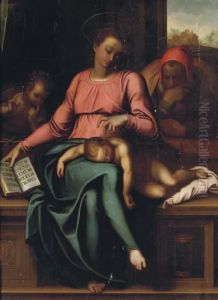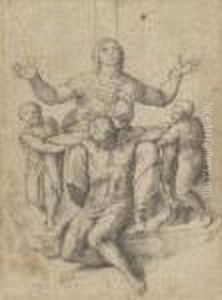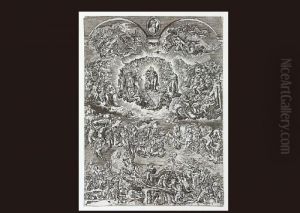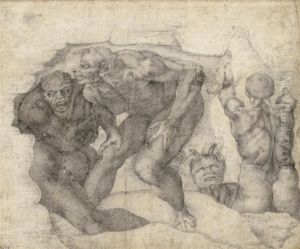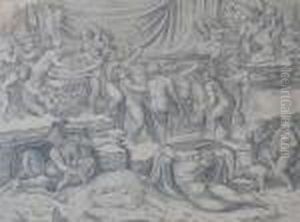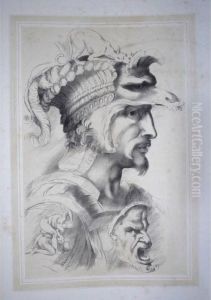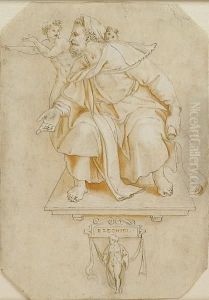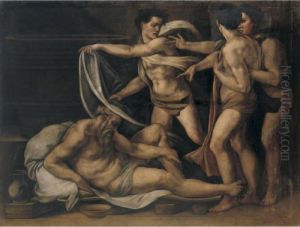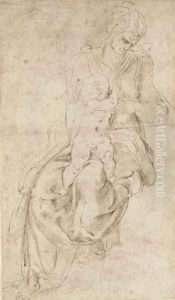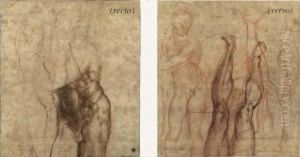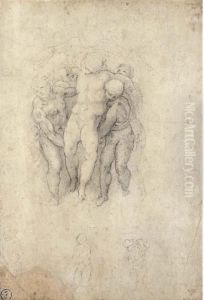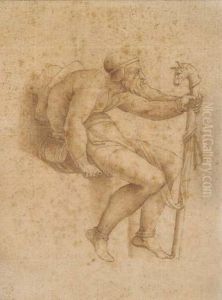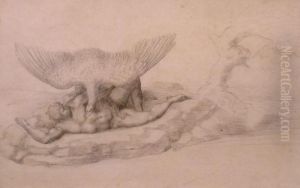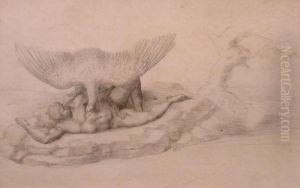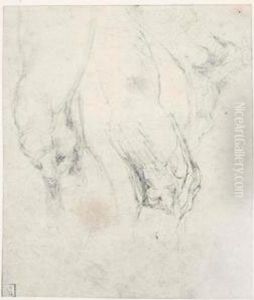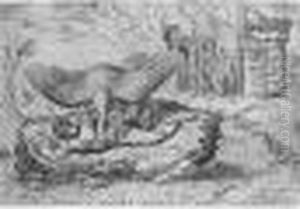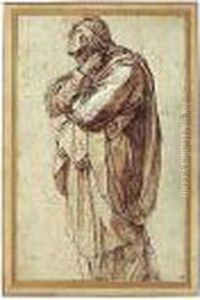Michelangelo Paintings
Michelangelo di Lodovico Buonarroti Simoni, commonly known as Michelangelo, was an Italian sculptor, painter, architect, and poet of the High Renaissance born in the Republic of Florence who exerted an unparalleled influence on the development of Western art. His exceptional talent was recognized early on, and he was apprenticed at the age of 13 to the prominent Florentine painter Domenico Ghirlandaio. He later studied at the sculpture gardens of the powerful Medici family, where he was exposed to many great artists of the past, such as Donatello and the ancient Roman masters. Michelangelo's notable early work includes the 'Pietà', a stunning marble sculpture of the Virgin Mary holding the dead body of Christ, and the colossal marble statue of 'David', both of which showcase his masterful portrayal of the human form and emotion. His fame grew quickly, and he became recognized as one of the most talented artists of his time. In 1508, he was commissioned by Pope Julius II to paint the ceiling of the Sistine Chapel, a monumental project that took four years to complete and resulted in one of the greatest masterpieces of Western art. Beyond painting and sculpture, Michelangelo was also a prolific architect. He was involved in the design of the Laurentian Library and the Medici Chapel in Florence. In Rome, he took over the construction of St. Peter's Basilica in 1546 and was the architect behind its iconic dome, which was completed after his death. Throughout his life, Michelangelo also composed many sonnets and madrigals, further showcasing his artistic versatility. Michelangelo's work was characterized by his deeply personal and expressive interpretation of Classical antiquity, and he was often preoccupied with themes of human struggle and redemption. His innovative use of the human form, as seen in works such as 'The Last Judgment' on the altar wall of the Sistine Chapel, and the unfinished series of sculptures known as the 'Prisoners' or 'Slaves', pushed the boundaries of artistic expression of his time. His long life spanned nearly 89 years, during which he witnessed the Renaissance period's most vibrant phases. Michelangelo's legacy is profound, and he is often referred to as 'Il Divino' ('the divine one') for his unparalleled contributions to the world of art. His works continue to attract millions of admirers from around the world, and his artistic genius remains a source of inspiration for countless artists and art enthusiasts alike.
